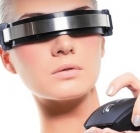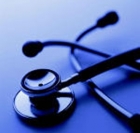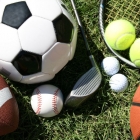-
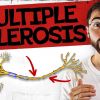 +2 +1
+2 +1Hidden Ketones: A New Story of Neuroprotection and Gut Health
-
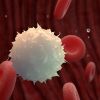 +26 +1
+26 +1“Inverse vaccine” shows potential to treat multiple sclerosis and other autoimmune diseases
Pritzker Molecular Engineering researchers led by Prof. Jeffrey Hubbell showed that their compound can eliminate the autoimmune reaction associated with multiple sclerosis.
-
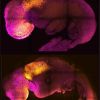 +17 +1
+17 +1'Synthetic' mouse embryo with brain and beating heart grown from stem cells
Researchers from the University of Cambridge and Caltech have created model mouse embryos from stem cells—the body's master cells, which can develop into almost any cell type in the body—that have beating hearts, as well as the foundations for a brain and all of the other organs in the mouse body.
-
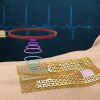 +23 +1
+23 +1Engineers fabricate a chip-free, wireless electronic “skin”
MIT engineers fabricated a chip-free, wireless electronic “skin.” The device senses and wirelessly transmits signals related to pulse, sweat, and ultraviolet exposure, without bulky chips or batteries.
-
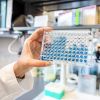 +3 +1
+3 +1The quest to show that biological sex matters in the immune system
Sabra Klein is deeply aware that sex matters. During her PhD research at Johns Hopkins University, Klein learned how sex hormones can influence the brain and behavior. “I naively thought: Everybody knows hormones can affect lots of physiological processes—our metabolism, our heart, our bone density. It must be affecting the immune system,” she says.
-
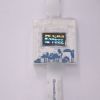 +26 +1
+26 +1This Dissolvable Smartwatch Is a Clever Way to Battle E-Waste
While these days you’re more likely to buy a smartwatch that can withstand water, now there are smartwatches that can dissolve in water. Researchers from Tianjin University used a two-metal nanocomposite material to create a fully functioning prototype smartwatch that dissolves when submerged.
-
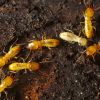 +12 +1
+12 +1Termite gut microbes can help turn toxic wood into biofuels
Termites are renowned for devouring wood. Now, bacteria in one termite species’ guts have been shown to break down toxic creosote, which is used to preserve wood. The finding could be useful for turning harmful chemically treated wood waste into biofuels.
-
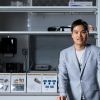 +15 +1
+15 +1Wearable brain-machine interface turns intentions into actions
A new wearable brain-machine interface (BMI) system could improve the quality of life for people with motor dysfunction or paralysis, even those struggling with locked-in syndrome—when a person is fully conscious but unable to move or communicate.
-
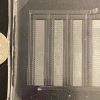 +14 +1
+14 +1New microfluidic device delivers mRNA nanoparticles a hundred times faster
The COVID vaccines currently being deployed were developed with unprecedented speed, but the mRNA technology at work in some of them is an equally impressive success story. Because any desired mRNA sequence can be synthesized in massive quantities, one of the biggest hurdles in a variety of mRNA therapies is the ability to package those sequences into the lipid nanoparticles that deliver them into cells.
-
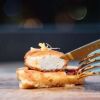 +16 +1
+16 +1Club-goers take first bites of lab-made chicken
Singapore regulators in December approved in vitro cultured chicken, giving the world’s lab-developed meat industry its official commercial start. The company behind the poultry product, Eat Just, has since sold more than 200 servings of the poultry to 1880, a club in Singapore, and plans to expand to other restaurants on the island nation this year.
-
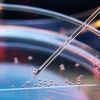 +18 +1
+18 +1Scientists plan to drop limits on how far human embryos are grown in the lab
As technology for manipulating embryonic life accelerates, researchers want to get rid of their biggest stop sign.
-
 +21 +1
+21 +1Inspired By Nature, Zymergen Brews High-Performance Bio-Electronics
This simple-looking film will probably end up in your next smartphone, laptop, watch, or television. It's made by fermentation—the same process used to make bread and beer. The biomanufacturing era has begun.
-
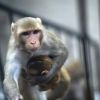 +2 +1
+2 +1World’s first human-monkey hybrid created in China
Researchers pledge to continue using primates in search for transplant organs
-
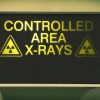 +27 +1
+27 +1New way to protect against high-dose radiation damage discovered
Intensive radiotherapy can be toxic in 60 percent of patients with tumors located in the gastrointestinal cavity. Increases in levels of the protein URI protect mice against high-dose ionizing radiation-induced gastrointestinal syndrome and enhance mouse intestinal regeneration and survival in 100 percent of the cases. This finding could be useful to mitigate side effects of other sources of intensive radiation, such as nuclear accidents, nuclear warfare or the exposure to cosmic radiation during space explorations.
-
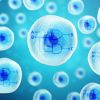 +10 +1
+10 +1A biosynthetic dual-core cell computer
Controlling gene expression through gene switches based on a model borrowed from the digital world has long been one of the primary objectives of synthetic biology. The digital technique uses what are known as logic gates to process input signals, creating circuits where, for example, output signal C is produced only when input signals A and B are simultaneously present.
-
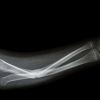 +13 +1
+13 +1Graphene Shows Promise for Repairing Broken Bones
When you were a kid, did you ever sign a classmate’s cast after they broke an arm or a leg? Your name would be on display there for the rest of the semester. Broken bones are one of the worst trade-offs in childhood—a few seconds of calamity followed by months of boring rest and recovery. But children in the future may have a different story to tell as emerging tech overhauls how we fix broken bones.
-
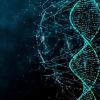 +19 +1
+19 +1Scientists Just Added Four New Letters to the Genetic Code
A four-letter alphabet might seem limited, but it’s all nature needed to write the instructions for all life on the planet. News that researchers have added four letters to the genetic alphabet opens the door to new possibilities in synthetic biology, data storage, and even the search for life beyond our planet. The genetic code at the heart of all living things is elegantly simple. Each half of the famous double helix structure is built from four small molecules called bases: adenine, thymine, cytosine and guanine (ATCG).
-
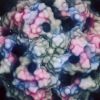 +17 +1
+17 +1Stem cell breakthrough could help cure type 1 diabetes
Scientists have edged one step closer to a major treatment for (and possibly cure for) type 1 diabetes. A UCSF team has claimed it's the first to turn human stem cells into the mature, insulin-producing cells that type 1 patients don't have. The key was to acknowledge a reality in the development of islets, or clusters of healthy beta cells (which generate insulin) in the pancreas. They separated partly differentiated pancreatic stem cells into islets, jumpstarting their development and leading to responses to blood sugar that more closely represented mature cells. Even alpha and delta cells grew more effectively, UCSF said.
-
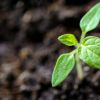 +22 +1
+22 +1Scientists Hack A shortcut for Photorespiration in plants, Boosting Crop Growth by 40 percent
Increasing the yield of crop plants is a major facet of increasing food security, and one way to do this is from understanding plant biology which begins with the process of photosynthesis. Photosynthesis, popularly termed as the “green engine of the earth”, is the process by which plants convert light energy into chemical energy that is later released to fuel the plant activities such as growth. If we want to keep the planet and its growing population running in a sustainable way, we will need plants to produce far more food, energy and applicable biomass than they do today.
-
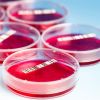 +22 +1
+22 +1Research identifies new therapeutic target for cancer treatment and tissue regeneration
Research led by the University of Plymouth and Technische Universität Dresden has identified a new therapeutic target for cancer treatment and tissue regeneration - a protein called Prominin-1. Dr Bing Hu from Plymouth's Institute of Translational and Stratified Medicine (ITSMed) together with Dr Denis Corbeil from the Technische Universität Dresden and a multinational team has shown how Prominin-1 (also known as CD133) plays a significant role in ensuring stem cells respond to extracellular signals.
Submit a link
Start a discussion

